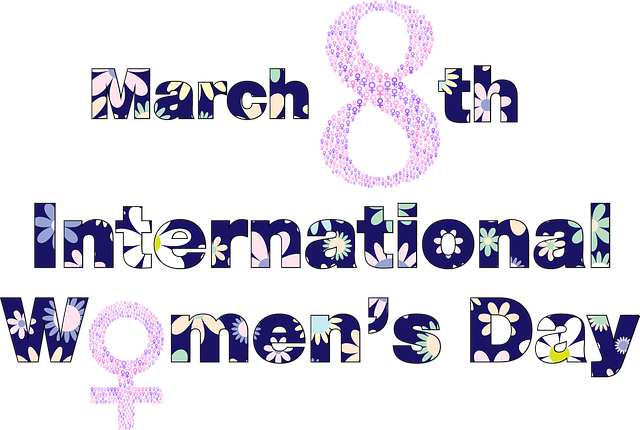Celebrating the Women Who Made an Impact on London’s Culture

This International Women’s Day, author and tour guide Rachel Kolsky is hoping to spread awareness about extraordinary women from London. Her goal is to elevate and celebrate the impact women have had — and continue to have — on London’s streetscape, heritage and culture.
Through her association with The Women’s Library, she has planned a series of tours throughout the city that highlight amazing women who have shaped society and strived for society. In her new book Women’s London: A Tour Guide to Great Lives some of these women are recognized.
Here are 8 highlighted women from Kolsky’s book. to remember this International Women’s Day.
Elizabeth Fry
Elizabeth was a prison reformer and the second woman to be depicted on a British bank note. As a teenager she visited prisons, took an interest in the treatment of female inmates and is particularly associated with reforming London’s notorious Newgate Prison. She campaigned for improved conditions on ships transporting felons and migrants to Australia and established night shelters for the homeless and a School of Discipline for Girls in Chelsea.
Annie Besant
Ms. Besant was an activist, theosophist and supporter of Indian self-rule. Recognized as a brilliant crater, she campaigned on behalf of workers’ rights, particularly the matchgirls and women’s rights, and in 1989 was elected to the London School Board. Her socialist vision was international in scope and she eventually moved to India in 1893, where she toured the country advocating improved education, women’s rights and self-rule.
Beatrice Webb
Beatrice Webb was a socialist, economist, social reformer and co-founder of the London School of Economics. She believed that the underlying causes of poverty — poor housing, education and health — needed to be eradicated before social progress could be made. She investigated the working conditions of the East End sweated industries and dockyards for her cousin Charles Booth, collected rent for Samuel Barnett’s East End Dwellings Company, authored books on the Co-operative Movement, coined the phrase ‘collective bargaining’ in 1891, was an active member of the Fabian Society, a group who believed in non-revolutionary social change and, with her husband, Sidney, co-founded the New Statesman.
Emmeline Pankhurst
Emmeline founded the Women’s Social and Political Union (WSPU) in 1903 in response to the perceived failure of moderate negotiation by suffragists led by Millicent Fawcett to gain votes for women. Originally working with two of her daughters, Christabel and Sylvia, Emmeline became increasingly frustrated with the constant betrayal by male politicians, and advocated radical and violent means to transmit the ‘Votes for Women’ message. In 1909 the militants were dubbed ‘suffragettes’ by the Daily Mail and the nickname stuck. The campaign was a team effort but it is the Panhursts who resonate as the leaders.
Edith Cavell
Through her execution became a symbol for patriotism and bravery. She trained as a nurse at the London Hospital in 1896. In 1907 she was invited to Brussels to establish a nurses’ training establishment based on the Florence Nightingale model. Her hospital, used by the Red Cross, nursed all soldiers, but Edith provided additional assistance to the allies including safe houses, false papers and passage to neutral territory. In August 1915 she was arrested, found guilty of treason and executed two months later on 12 October. In 1920 Queen Alexandra unveiled a statue if Edith at St. Martin’s Place, near the National Potrait Gallery and in 1924 Edith’s words ‘Patriotism is not enough, I must have no hatred or bitterness to anyone’ were added.
Rhaune Laslett-O’Brien
In 1965 Rhaune Laslett-O’Brien , a London-born activist of Native American and Russian descent, initiated the Notting Hill Street Party. This and Claudia Jone’s indoor festival developed into the Notting Hill Carnival, an August Bank Holiday extravaganza of vibrant costumes, music and dancing. Plaques at the junction of Portobello and Tavistock Roads commemorate both Claudia and Rhaune.
Olive Morris
Ms Morris was a Jamaican-born radical campaigner. Arriving in London aged nine, she lived in Brixton, South London for 14 years until 1975. In 1978 Olive co-founded the Organization of Women of African and Asian Descent (OWAAD), the Brixton Black Women’s Group and Brixton Law Centre. She campaigned for squatters’ rights, and while studying at Manchester University joined the Communist Party and established the Manchester Black Women’s Co-operative. In 2009 her image adorned the 1 pound note at the launch of the Brixton Pound, a local community currency.
Marie White
Until 1977 the only people who could drive the iconic London black cabs were men. Trainee drivers study ‘the Knowledge’ for years, mastering the labyrinth of over 26,000 streets within a 6-mile radius of Charing Cross. Only then can they gain the coveted London-wide Green Badge. In 1976 Marie White, married to cab driver Jack, became the first woman to ‘learn the Knowledge.’ She trained using a Mini rather than the usual moped for the first ten months and in 1977 became the proud owner of Badge 25292. She and Jack were the first married couple both to be licensed cab drivers. In 1983 she joined Dial-a-Cab (now Computer Cab) and in 1988 joined their Board of Management, the first woman to do so. Today however, 40 years after Marie’s achievement, it is estimated that just 2 percent of London cab drivers are women.
To learn more about women of London, grab a copy of Women’s London: A Tour Guide to Great Lives — Guidebook to the Women Who Shaped London Through the Centuries and the Legacy They Left Behind; Scientists, Suffragettes, & Pioneers by Rachel Kolsky.
ABOUT WOMEN’S LONDON

Women’s London is the only guidebook that focuses on the women who have shaped London through the centuries and the legacy they have left behind.
This new book provides the perfect opportunity to explore sights, statues, plaques and buildings associated with famous and some not so famous women who have left their mark on London’s heritage, culture and society. Their stories include scientists and suffragettes, reformers and royals, military and medical pioneers, authors and artists, fashion and female firsts, and more.
The author, a popular London tour guide and lecturer, specializes in women’s history and has provided a series of original self-guided walking tours taking you to historic areas where important women lived, worked and are commemorated.
Illustrated with new full-color photography and specially commissioned maps, Women’s London will inspire visitors and Londoners alike to discover how much London owes to women.
ABOUT RACHEL KOLSKY

Prize-winning London Blue Badge Guide Rachel Kolsky runs Go London Tours. Her wide range of walks and visits specializes in exploring Jewish heritage, discovering women’s history, and uncovering the human stories behind London’s buildings. (Ms. Kolsky photo via The Jewish Chronicle)



